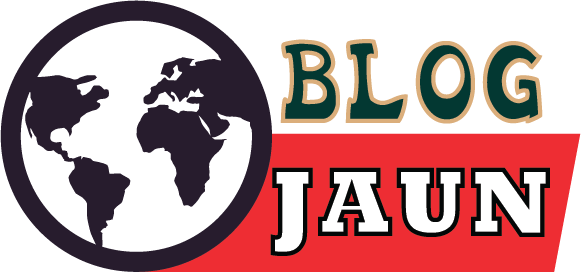A harsh winter threatens the children of Syria
Winter in SyriaCold and harsh, and it becomes more harsh in light of the lack of fuel and heating methods, so the Syrians resort to collecting cardboard and cutting trees to burn them to warm their children, and this applies to those who are under the control of the Syrian regime or those who are under the control of the Syrian Democratic Forces.
Alternative fuel in Syria is cardboard, plastic, and dried tree remains, but they cause great harm to health.
Firewood prices have risen significantly this year due to high transportation costs from the Syrian coast, with the price of a kilo of olive firewood reaching 6,000 Syrian pounds, while the price of a ton reached about 3 million Syrian pounds, or more than 200 US dollars.
bad fuel
Ammar (a pseudonym) is a Syrian citizen living in areas controlled by the Syrian Democratic Forces, in the countryside of Raqqa. He spoke to Akhbar Alaan about their suffering in obtaining “mazut” for heating.
He explained that the SDF gives each family only about one barrel of diesel at a reduced price during the winter, and it is one of the worst types of fuel, because it either does not burn easily because it contains quantities of water, or it is dangerous because it contains other materials such as gasoline and kerosene due to poor filtration.
He added that last winter, several fires were recorded due to the mixing of gasoline with diesel, which led to the death of a number of civilians and the burning of a number of homes.

SDF controls most of Syria’s oil wells
The eastern regions of Syria constitute the main center of oil production in the country, as the oil fields are concentrated in Deir ez-Zor Governorate near the Syrian border with Iraq and in Hasakah Governorate in northeastern Syria.
The oil sector in Syria suffered a major decline after 2011, as regime forces lost control of most of the oil fields to opposition forces, then to the terrorist organization ISIS, and finally to the Syrian Democratic Forces (SDF).
Most prominent oil fields
The Syrian Democratic Forces imposed their control over areas of Deir Ezzor Especially the wealth and oil resources in eastern Syria, and the most prominent of these sites are the wells of the Conoco gas field, the Omar and Tanak fields, and other wells such as the Sovereignty, Yellow, Blue and Salt wells, and these wells were subjected to sabotage due to the bombing of warplanes.
The production of all oil fields in the SDF areas is about 150 thousand barrels per day, while reports say that production has decreased by half after the recent unrest in the areas under its control, especially in Deir Ezzor.
The production of Deir Ezzor fields is estimated at 15 thousand barrels per day, most of which is sold to the Syrian regime through Qatirji companies, at reduced prices, as the price of a barrel is only about 20-30 dollars, and thus daily revenues range between 300-400 thousand dollars.
Regarding how oil revenues will be distributed, there is no clear data, but recently, due to the unrest in Deir Ezzor against the backdrop of fighting with the so-called tribal forces, the SDF announced its intention to allocate 25% of oil revenues from Deir Ezzor fields to the local population, and the rest of the revenues will be distributed to basic expenses such as public services and fighters’ salaries.

What does the SDF do with the oil?
According to local and international reports, the combined production of the fields under the control of the Syrian Democratic Forces amounts to nearly 150,000 barrels per day, which are sold to 3 parties:
The first is the Syrian regime, to which oil is sold at symbolic prices ranging between $25 and $30 per barrel, and oil shipments are sent to it through intermediaries, most notably the Qatirji Company, via a crossing established by the Syrian Democratic Forces in the western countryside of Raqqa, or through river smuggling crossings in the towns of Dhibyan and Al-Shuhail in Deir Ezzor.
The Syrian Democratic Forces also sell oil through brokers to areas controlled by the Syrian opposition at a price of up to $50 per barrel, through the crossing that separates its areas from the opposition areas in Jarabulus, where it is refined in a primitive manner in simple refineries in the town of Tarhin near Jarabulus.
The SDF also sends part of the oil to its allies in northern Iraq, whether the forces affiliated with the Patriotic Union of Kurdistan or the Sinjar Resistance Units.
In contrast, the Syrian regime controls several fields, most notably Al-Taym, Al-Ward, Al-Shula, and Al-Shumaytiyeh, in addition to the Al-Mahash and Al-Kharata oil stations. The current production capacity of these fields combined is 18,000 barrels per day, which is replicated in the Baniyas oil refinery.
Damascus loses its tree cover
Because many people are turning to cardboard and tree branches, some have also resorted to cutting down trees. The director of the “Parks Directorate” in Damascus Governorate, Sumer Farfour, previously reported at the end of last year that “more than 100 violations were recorded for cutting down trees of different sizes during the winter, and 4 warehouses of illegal wood were seized on the road to the Barzeh areas and the Al-Faihaa highway.”
He added, according to what was reported by the regime-affiliated newspaper “Al-Thawra”, that “15 people were arrested for cutting trees and branches from public places and streets, and they were referred to the competent judiciary.”
He pointed out that the penalty for anyone who cuts down forest trees on roads, in public places, and even private ones, is imprisonment from 6 months to 2 years, and a fine of between 500,000 and 2 million liras.




